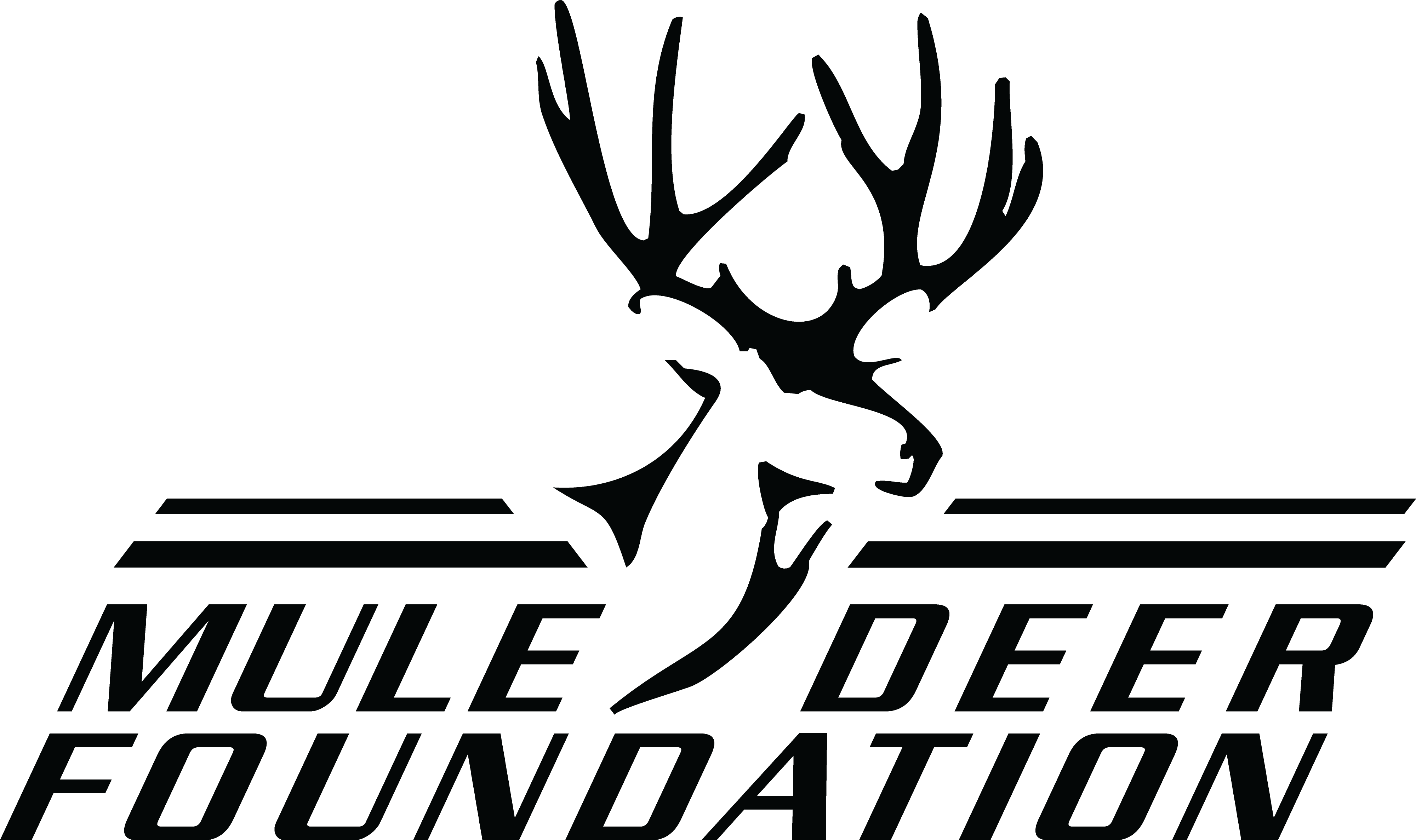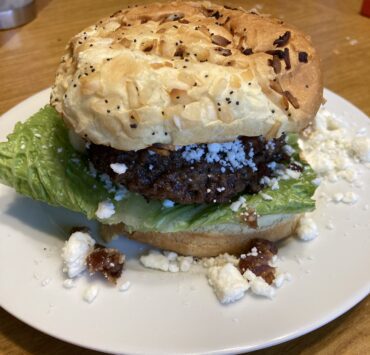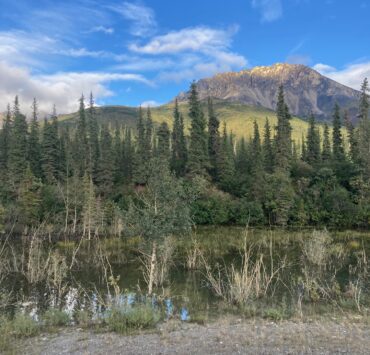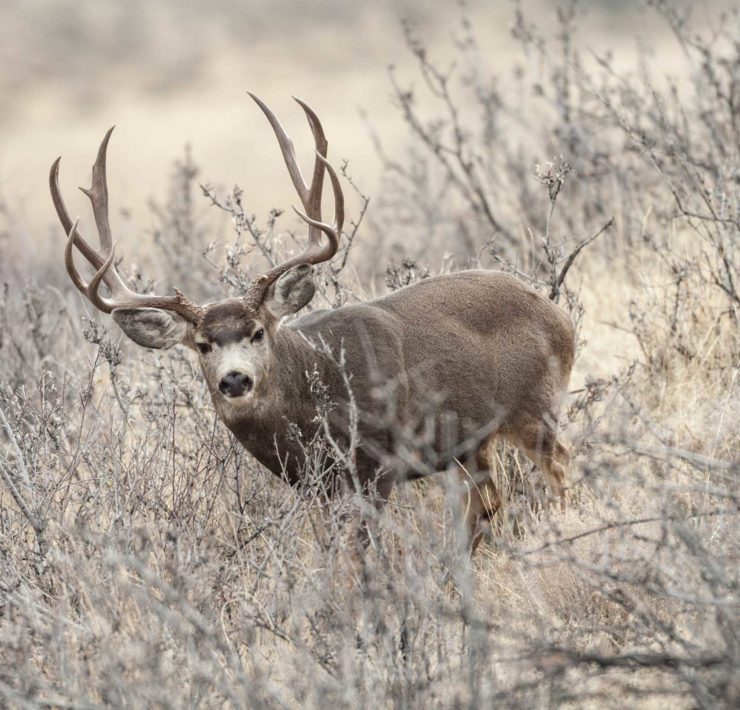An Idaho and Utah Deer Entanglement
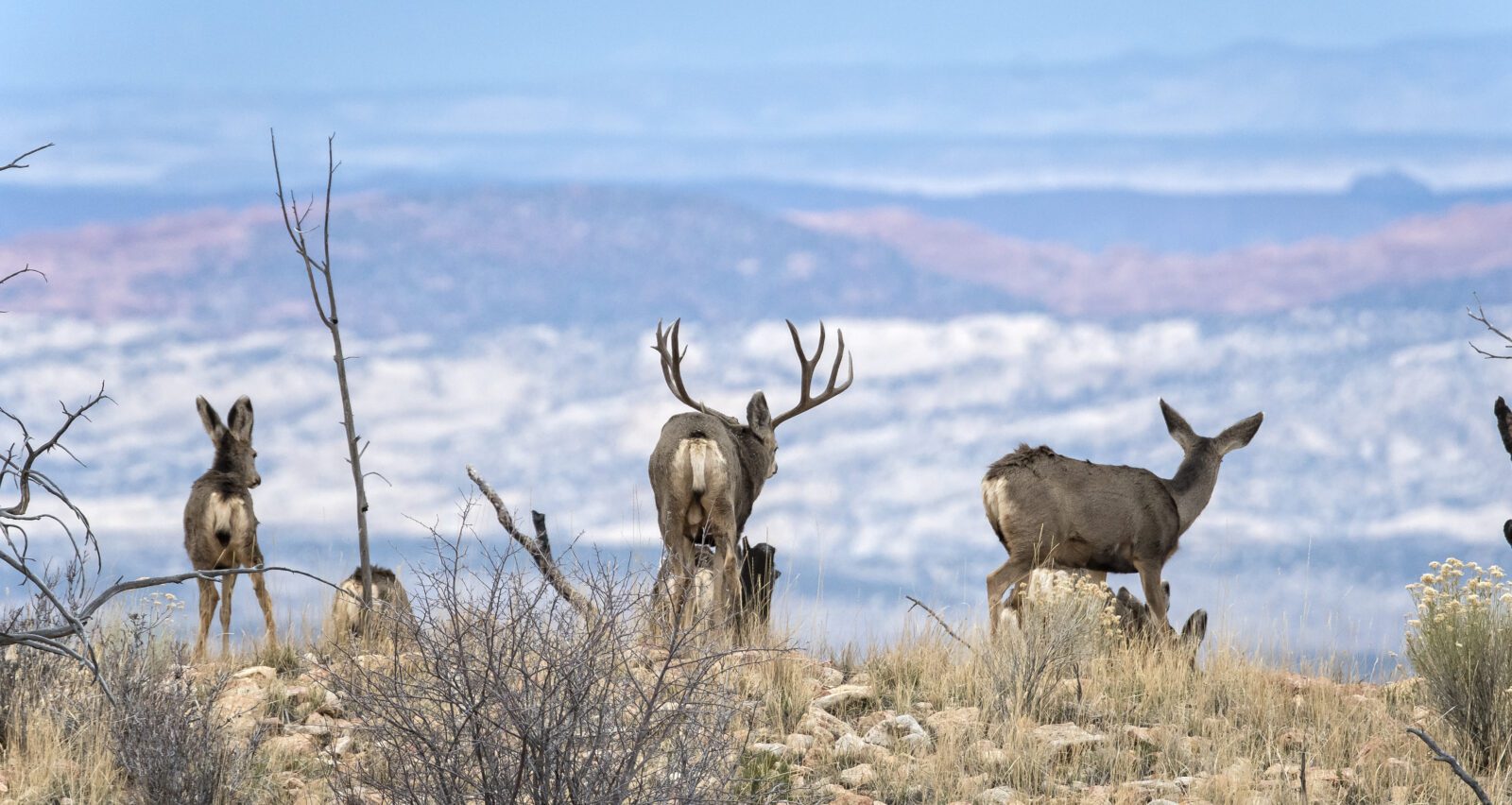
“Connected by Conservation”
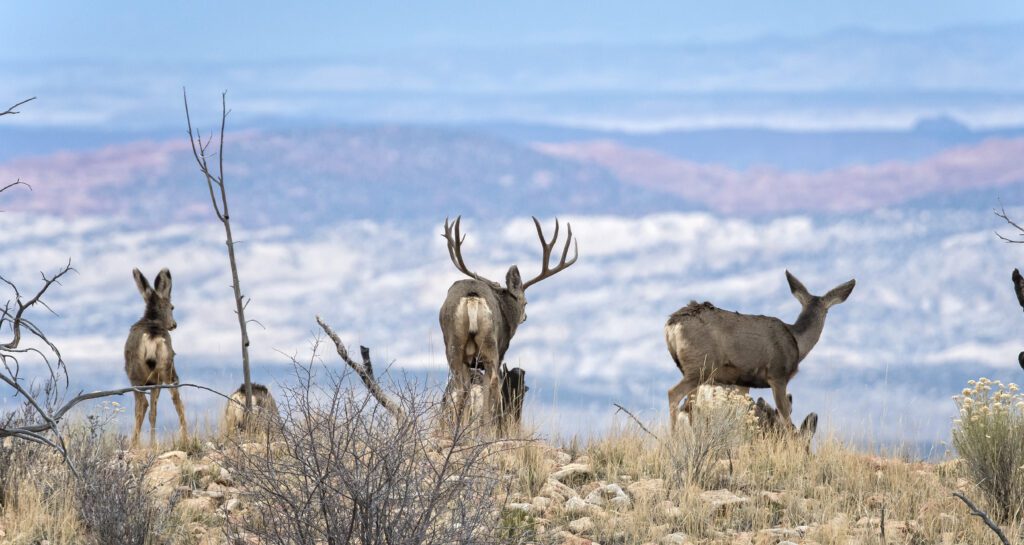
Conservation Project Collaboration:
In June 2024, the Mule Deer Foundation’s conservation staff began a multi-partner and multi-state project to address fence entanglement concerns for mule deer migrating between Idaho and Utah.
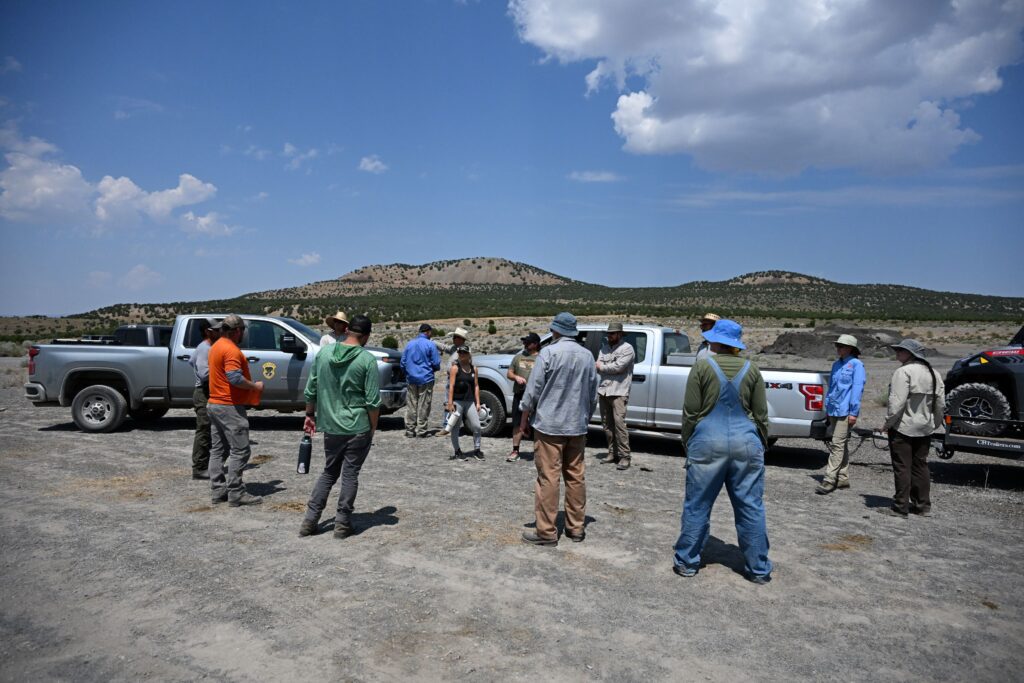
The goal for this project is to replace the existing five-strand barbwire stock fence with wildlife friendly fencing to support the migration patterns of the Idaho Stone Hills Mule Deer herd.
“It is a little known fact that while Mule Deer can jump over 15ft in a single bound horizontally, they can only jump around two and a half feet off the ground.” said MDF Biologist Grace Bullington.
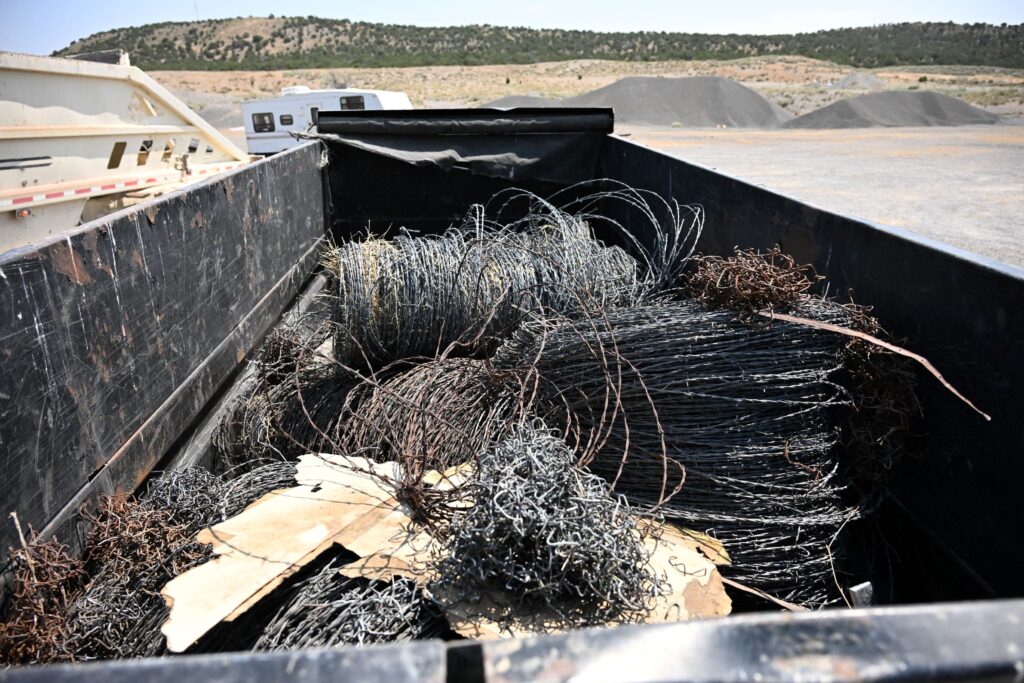
Why Here?
Every year the majority of Idaho’s southern Mule Deer herd migrates across the border to Snowville, UT for winter. Based on aerial surveys conducted by the Idaho Department of Fish and Game biologists identified 25-30% of their deer herd was wintering on private property in UT. Most of the data points from collard deer pointed to a location on or within ¼ mile of the “Rose of Snowville” parcel.
This property is currently terminal winter range for this herd as the southern border of this property is highway 84. Utah Division of Wildlife Resources (UTDWR) and IDFG collar data show the interstate as a clear barrier to movement further south for deer using the Stone Hills and North Hansel mountains.
How this collaboration works
Through IDFG, MDF and UTDWR collaboration we were able to meet with the landowner and ranch manager of the Rose to discuss deer winter range concerns on his property. Current fencing was identified as an immediate problem. Deer entanglement is common during the winter on the ranch.
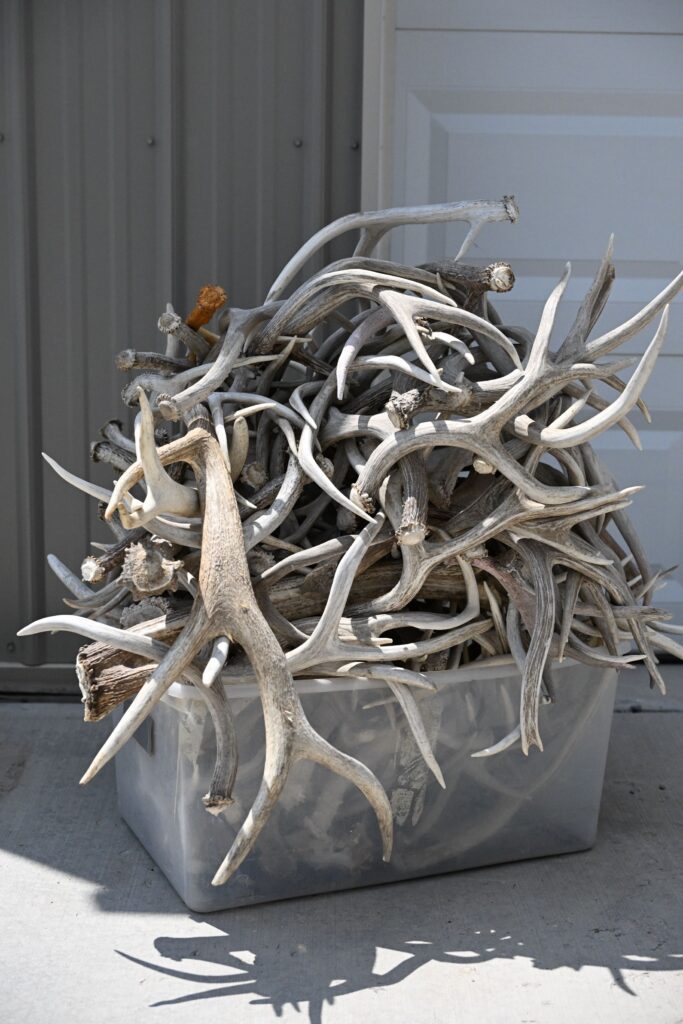
The landowner agreed to convert 8.25 miles of barbwire fencing to wildlife friendly fencing based on the NRCS technical guidelines. In addition, by engaging with federal partners including the ID Bureau of Land Management (BLM) and US Fish and Wildlife Services (USFWS) we were able to identify an additional 3.4 miles of barbwire fence along the ID, UT state line to modify.
The Future for the Idaho Stone Hills herd:
These small fencing changes will reduce the likelihood of deer entanglement during winter and ease movement of individuals across the ranch. Additionally, this allows for future coordination between all entities to improve winter range habitat through vegetation treatments on this property, bordering BLM land, and neighboring properties.
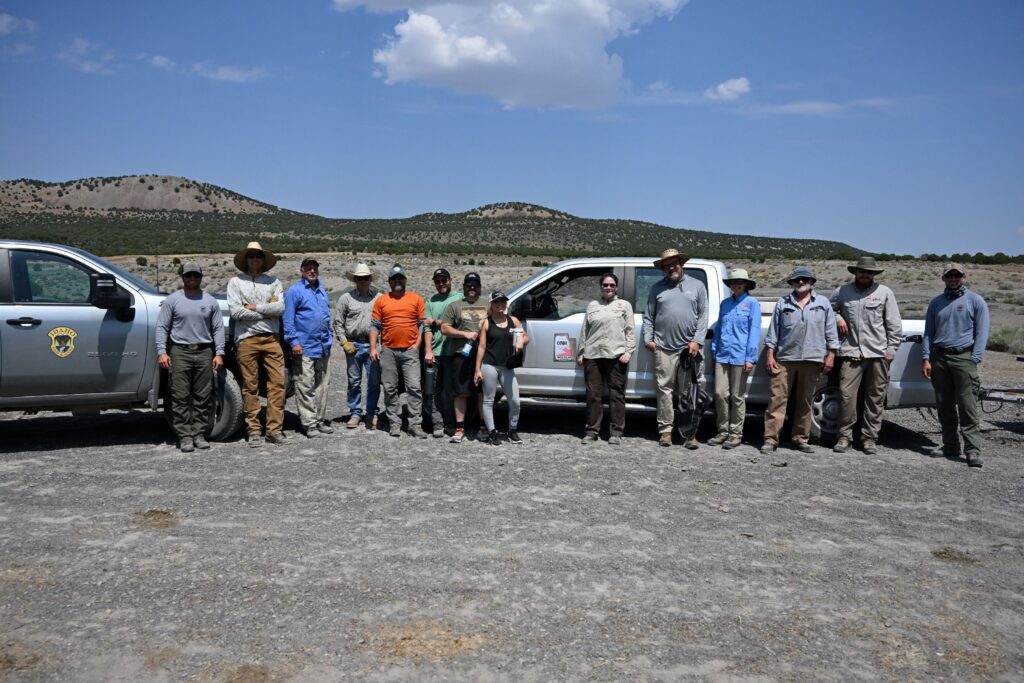
Successful work here is likely to facilitate those neighbors’ pursuit of similar fence improvements with MDF and/or our various partners. This was a highly collaborative project and could not have been accomplished without our partners, a willing landowner, volunteers, and chapter rewards funding.
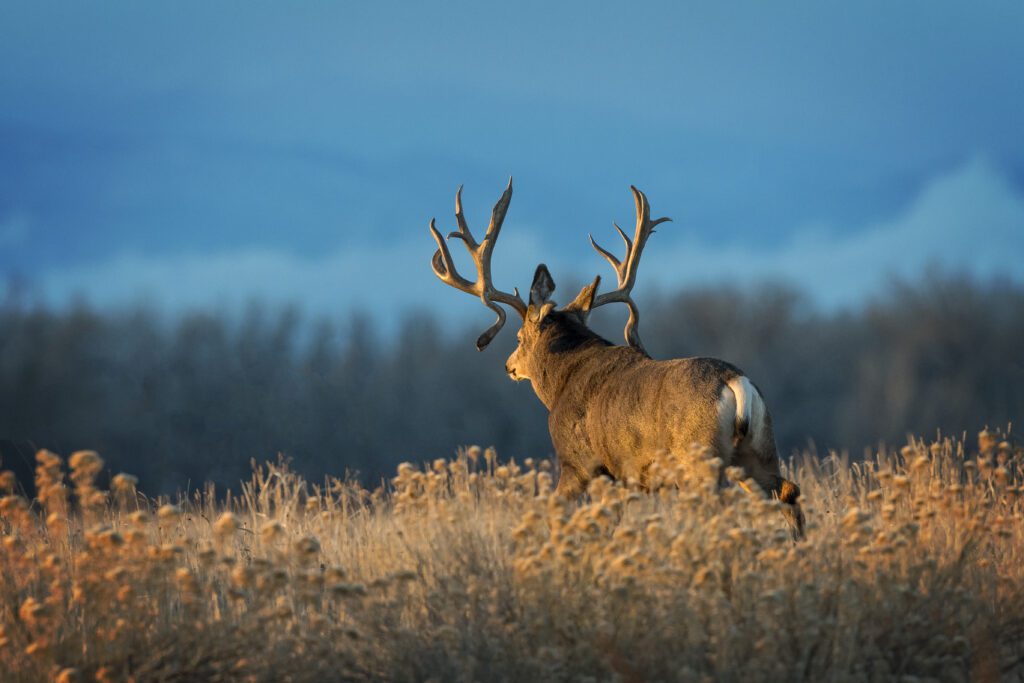
Thank you to all who worked to make this a reality!
Good luck this fall everyone. Send any success pictures or stories from the field to [email protected] and you could be featured on our website or in our magazine. If this article has helped you become a better hunter or conservation steward, become a member of the mule deer foundation. Click here to join: https://muledeer.org/product-category/membership/
Trevor Hubbs

Trevor is the Communications Manager and Editor for the Mule Deer Foundation and Blacktail Deer Foundation. He grew up hunting and fishing the Ozark Mountains for quail, ducks, and bucks. Now he ventures west for mule deer as often as possible.


